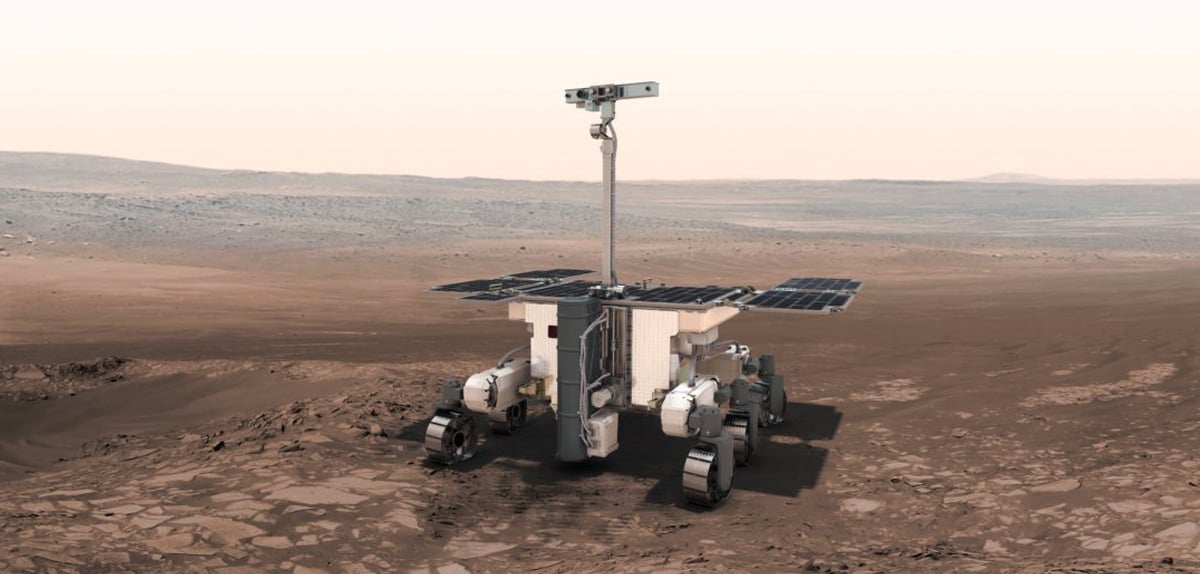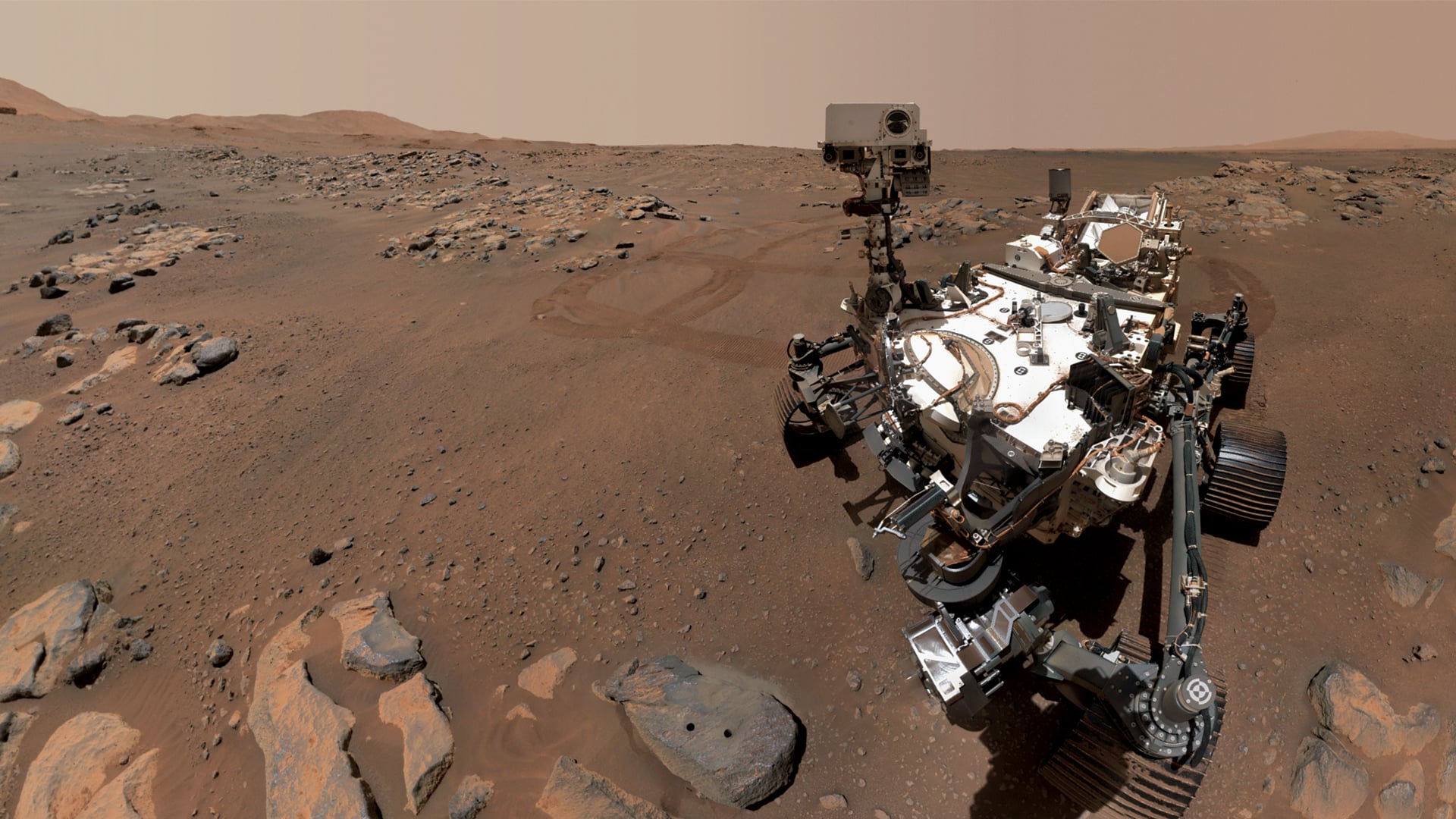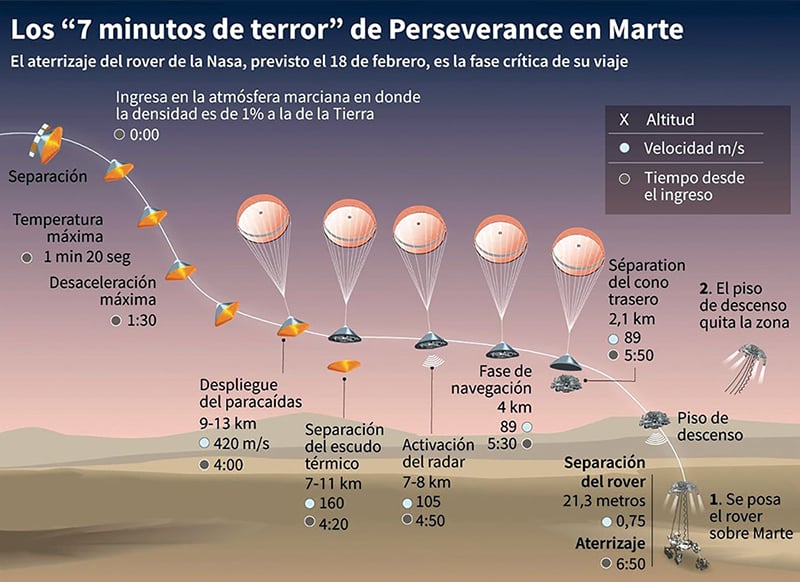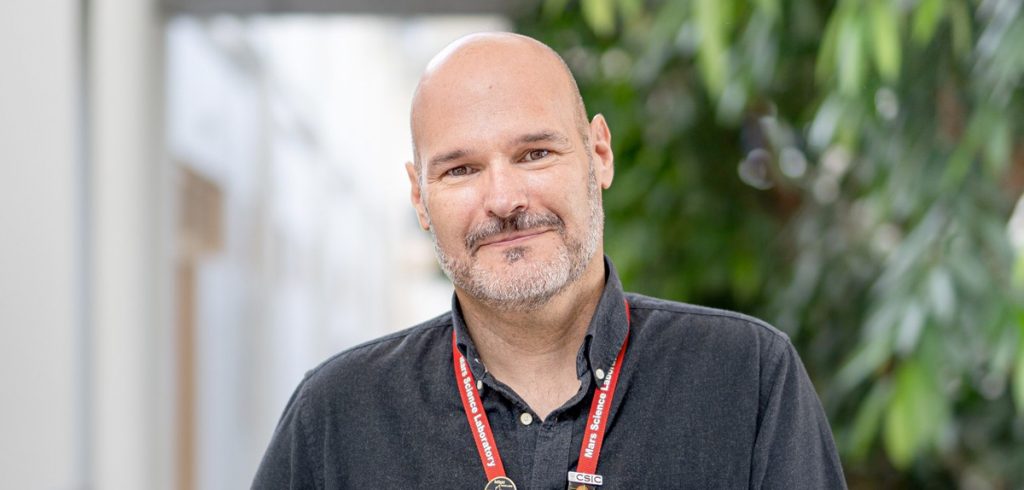José Antonio Rodríguez Manfredi, Doctor of Engineering in Telecommunications, started working as an engineering at the University of Seville, in the Department of Systems Engineering and Automation, between the years 1999 and 2001. This same year he obtained, through the INTA, a scholarship for engineers and doctors at the recently formed Center of Astrobiology a joint effort of INTA and CSIC, and he moved to Madrid. There he held the position of director of the Advanced Instrumentation Department from 2010 to 2015 and of lead researcher of the Space Instrumentation Research Group since its formation in 2012 until today.
Jose Antonio is the lead researcher for the Temperature and Winds for InSight (TWINS) instrument of NASA’s InSight mission, which is on Mars since 2018. He is also the lead researcher for the Mars Environmental Dynamics Analyzer (MEDA) instrument aboard the Perseverance rover, which is part of the Mars 2020 mission, also of NASA. His research focuses on the study and development of the space instrumentation for the exploration and environmental and geobiological characterization of other planets or moons, as well as of extreme environments on Earth. For this reason, we thought it was a great moment to interview him because of the great breakthroughs attained by the Perseverance rover.
How did your relationship with NASA start, and what is your daily work as a researcher at INTA like?
Since the moment I arrived at INTA, where I currently work, a number of great opportunities started to emerge. Probably, it all began when, in 2003, we started working with NASA at Riotinto (Huelva). The American space agency clearly saw the interest of this site and, being acquainted with the local landscape, we started working with them. At first we did not have a lot of experience in instrumentation for space applications, but we quickly learned that common language (I am not referring to English) and how to work with them. It was then that we saw that we could build a broad and strategic partnership.
A little later came the opportunity to fly to Mars as part of the Mars Science Laboratory / Curiosity mission. We had to learn on the go, but it was tremendously enriching. Space implies continuously being at the top of your game; everything needs to be highly tested and offer the highest chances of things going right, so you need to be very careful when defining your goals as well. We barely had any experience building or working with environmental stations, but we seized that huge opportunity.
Perseverance is collecting soil and rock samples that can be brought back to Earth for a more detailed analysis”
Later, not long after the landing of Curiosity in 2012, NASA published selection for the upcoming Mars mission: InSight. So, while visiting the JPL, we proposed the mission team to use the REMS spare units as the weather station for that new mission. They immediately saw the advantages (an already developed instrument, risk free and correctly working on Mars aboard Curiosity) and we started working on adapting that hardware to the requirements and demands of InSight.
At the time we are enjoying the interesting data that the third environmental station that we have developed during the last few years the MEDA station aboard Mars 2020 / Perseverance is sending us every day since its arrival to Mars last February. When compared to its “older sisters,” this last instrument is a new generation of environmental stations that makes the most out of all the scientific and technological experience acquired with the previous systems.
How important is the spanish contribution to the exploration of mars, and specifically, the perseverance rover?
Few of our neighboring countries can claim to have actively participated in the exploration of Mars of the last few decades in such a significant manner as Spain has.
In our country there is a fair amount of research groups and companies that contribute toward the study of our neighboring planet one way or the other, and toward the development of technology to that end.
The INTA and the Astrobiology Center (CAB), together with other institutions and industries that compose the national consortium of the MEDA instrument, have the privilege of being at the forefront in the exploration of other worlds, both scientifically and technologically. This consortium, led by INTA-CAB, is formed by the Consejo Superior de Investigaciones Científicas, the University of Alcalá, the Polytechnic University of Catalonia, the Polytechnic University of Madrid, the University of the Basque Country, the University of Seville and the Institute of Microelectronics of Seville, as domestic partners, and the Jet Propulsion Laboratory, Finnish Meteorological Institute, NASA Goddard Space Flight Center, Cornell University, Carnegie Institution, University of Michigan, Space Science Institute, Lunar and Planetary Institute, Aeolis Corporation, Southwest Research Institute, John Hopkins APL, and the Università degli Studi di Padova as international research partners. We also counted with the important contribution of Airbus-CRISA, Added-Value-Solutions (A-V-S), and ALTER Technology.

We also have the good fortune of having the three stations that were sent currently operational, which makes up a Spanish mini meteorological network, if you will, on another planet, which is of significant value to validate Martian atmospheric models. Through them, we contribute to a better understanding of the environmental dynamics of the planet, which is particularly important when considering future crewed missions.
In addition to our involvement in Perseverance, another Spanish group led by the University of Valladolid is part of this NASA mission with the SuperCam instrument. Airbus CASA Espacio – CDTI has also developed the high gain antenna that the robot uses to communicate with Earth. And the technology contributions to the exploration of Mars do not stop there: other groups are also participating in the ExoMars mission, both with the Rosalind Franklin vehicle and with the Kazachok platform. This is in addition to research groups that analyze the data received from orbiters, surface missions and ground telescopes, and make significant contributions to gaining a better knowledge of our neighboring planet.
Because of all of this, I think it is important to recognize the privileged position of our country, not only when it comes to the study of the Martian atmosphere both scientifically and technologically, but also at the heart of the international Mars planetary community.
Which vehicles sent to mars carry technology for which you have been involved in its creation?
Spanish technology is present in the last three NASA missions: Mars Science Laboratory / Curiosity (on Mars since 2012), InSight (2018), and Mars 2020 / Perseverance (2021). These contributions are evidence of the high scientific and technological level of our country.
In addition to the environmental stations that we have already discussed and in which I have been involved, as I was saying, Spain has contributed with high gain antennas that allow both Curiosity and Perseverance to communicate with Earth and with the calibration patterns of the SuperCam American-French instrument.
On the other hand, the European Space Agency and Roscosmos will launch the next stage of the ExoMars mission next year, the Rosalind Franklin vehicle and the Kazachok platform. Both of them will also have a significant Spanish contribution: a Raman spectrometer, part of the meteorological package, and the anisotropic magnetoresistance sensor.
Until now, mars studies focused more on its surface. How is this mission different from the previous ones? Why is it important to explore the subsoil of mars? What milestones has this mission attained and which are yet to be achieved?
In today’s context of an arid, barren Mars, the subsoil turns out to be a somewhat more benign environment for any potential life that may have emerged to be able to survive and adapt.
Due to the light atmosphere that is present, the harmful ionizing radiation that strikes the surface reaches sufficiently high doses to preclude (or at least significantly hamper) life from thriving in that environment. However, when going a few millimeters deeper, that radiation is significantly filtered out by the dust and material deposits that cover the soil.
Therefore, a somewhat more benign environment such as the Martian subsoil, which also contains the necessary chemicals, water reservoirs and a certain access to energy sources, could well constitute a biosphere where Martian microbial life may have survived... if it ever emerged.
For now, we have no proof that life ever emerged on the red planet, let alone of it still being present. Those are the proofs sought by the scientific community through Perseverance, Rosalind Franklin and the future missions that we will send in the next few years, as I already mentioned.

Will this latest nasa mission be able to seek direct and unquestionable proof of life on mars, or will we have to wait until a possible crewed mission to the red planet?
The previous missions mainly Mars Exploration Rovers / Spirit and Opportunity, and Mars Science Laboratory / Curiosity yielded important evidence of a humid past and favorable habitability conditions for microbial life, present many billions of years ago, before the great Martian climate change.
However, before that climate cataclysm took place, it is possible that life had already emerged in the neighboring planet (at least, that is our hypothesis), as it had already on Earth under very similar environmental conditions to those on Mars.

So, this time around, Perseverance is not only going to perform a thorough analysis of the geological and mineralogical environment and the habitability of the landing site the Jezero crater, like Curiosity has been doing at Gale crater since its landing in 2012. In addition to this, the Perseverance rover will go a little further in the study of the astrobiological environment, focusing on the search for potential traces of past Martian life.
In this context, the Rover will use its advanced instruments to identify the samples of rock and soil that maximize the chances of finding traces of that potential past life. It will collect them, store them and later deposit them on the ground, lying in wait for a future mission to pick them up and bring them to Earth for detailed study someday. The European Space Agency and NASA are already working jointly on that program, called “Mars Sample Return.”
So, strictly speaking, and with the lessons learned from the Viking missions, Perseverance’s objectives do not aim to definitely prove the existence of past life on Mars, or otherwise. This mission needs to be seen as the first step in the ambitious strategic program that will enable us to reach that conclusion (hopefully) by collecting, bringing back to Earth, and thoroughly analyzing the samples with all of our scientific and technological capabilities. In this way, as Carl Sagan is usually attributed with saying, we will be able to find the extraordinary evidence required for the confirmation of the existence of life outside of our planet.
How much of the knowledge generated about mars leads to a better knowledge of earth and the solar system in general?
During the first 1-1.5 billion years since the formation of the Solar System, right before the Martian climate change that we discussed earlier, the evolution of Mars and Earth ran in parallel. While the cooling down of the neighboring planet led its evolution to the current state that we now know it is in, it is also true that the end of its volcanic activity and its tectonics have allowed Mars to offer us a unique window into what a rocky, terrestrial, habitable planet can be in its infancy.
That window allows us to better understand and know the formation and geologic history of our own planet through the comparative studies that we perform; how the Martian climate has shifted so significantly throughout time, and how that change has affected and has been preserved in its morphology and surface composition.
Has studying mars for so many years changed your outlook on life on earth?
Absolutely. Astronauts usually say that when they see Earth from space they are overcome by a feeling of significance, pondering on how small we are in an almost infinite universe. Differences aside, something similar happens to me.





